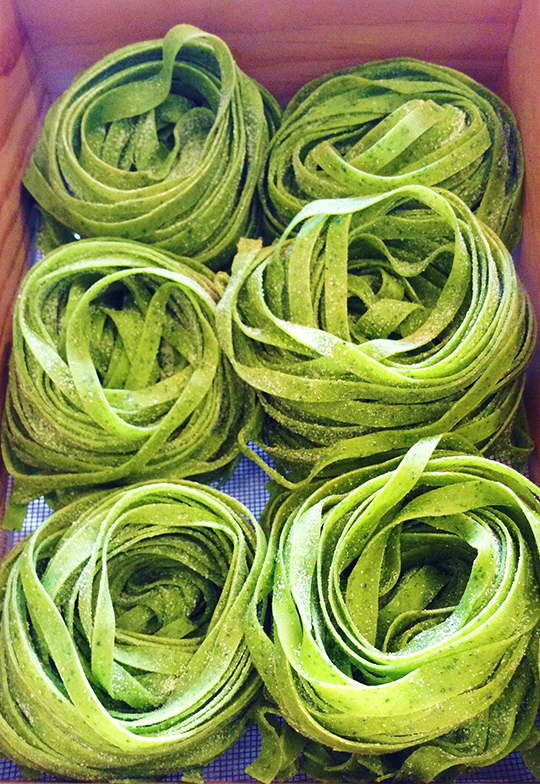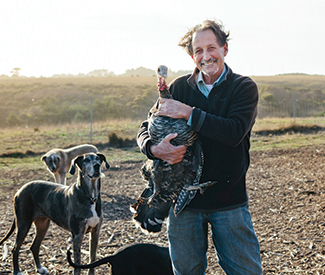FOOD Roughly a month after Sabrosa opened its tinted doors to flocks of the rarer type of Marina patron — one hungry for trend-pushing, flavor-forward cuisine — word got out that the plates outshine the cocktails at this upscale Mexican restaurant and bar.
With Chef Jose Ramos of Nopalito at the stove, braising up a mole-darkened storm of costilla de puerco, it’s easy to taste why. The confit pork short ribs slid off the bone with more ease than it took to scoop up mashed plantains. The Veracruzan Xico mole intertwined spices sweet, savory, and earthy all at once, imbibing the meat with a moisture so viscous (and I say this with only the highest compliments) that I mistook myself for an earthworm and the mole for luscious mud. I wanted to bottle it and drink it through a straw.
Ramos’ dishes manifest from memories of growing up as a child on a small farm in Guanajuato, Mexico. Recipes taught by his mother, aunt, and grandmother surface on the menu, recast as gourmet. The food captures a cultural authenticity of various regions of Mexico while contributing to the newest trend in local eateries: high-end Mexican. Much like the decades-old “California Cuisine” pioneered by Alice Waters, this modern twist on Mexican cooking conjures up a vision of authenticity while keeping a cactus-like claw on top of the fine dining scene.

Take the salpicón de jaiba, where Dungeness crab, chayote squash, carrots, onions, and watermelon radish meld in a kindling of colorful citrus slivers over a turf of guacamole. The dish contains recognizably Mexican elements (guacamole, lime) and familiar American favorites (crab, squash). Yet it also carries hidden flavors — or perhaps creates new ones — through the pairing of exquisite ingredients and techniques.
Chef Ramos was busy the night I was invited to visit. The most I glimpsed of him appeared in the bright green of my salad, which masqueraded briefly as bell peppers, until a slight squish between teeth gave way to delightfully slick, cured nopales amid buttery avocado and sprinkles of cotija cheese. The fresh flavor combination reminded me of my own father’s home-style Mexican cooking — though neither my home nor my father are Mexican.
Matt Stanton, the bar manager, sat down to chat. After opening El Dorado Cocktail Lounge and the Noble Experiment with his brothers in San Diego, Stanton took on the challenge of playing matchmaker between drinks and food at Sabrosa, a position that could be likened to the role of connective tissue in a human body.

First, Stanton had to match the precedence of cocktails set by the previous booze-focused venues of owners Hugo Gamboa, Adam Snyder, and Andy Wasserman. Next, he needed to create a drink menu that would highlight Ramos’ cooking — even create a sort of alcoholic baptism between the varying topographies of the aperitivos, barra fria, tacos y quesedillas, and entradas. Trickiest of all, he hoped to push past the boundaries of swinging saloon doors and run with his ideas, all the while holding hands with the traditional taste buds of the Marina.
“People love their vodka sodas down here,” said Stanton. “But that doesn’t mean the neighborhood isn’t ready to get more adventurous.” Rather than create something revolutionary, he decided to elevate classic cocktails using fresh juices and house-made syrups and grenadines. Next, Stanton incorporated ingredients into the bar that Ramos used in the kitchen, allowing the drink to lead diners into their meals. The Fillmore Añejo cocktail guides your palate into spicy dishes through morita chile-infused honey. With the Macho Margarita, a jalapeño gets lit on fire, then submerged into pueblo viejo blanco, topped with fresh lime, and ringed with cracked salt.
Most of the drinks featured tequila or mezcal, the latter a distillation of agave that many people aren’t yet familiar with. Most who’ve encountered mezcal have drunk a cheap, corn syrup-saturated variety, to which Stanton said, “you might as well stir it with your foot.” (Tip: to test the quality of mezcal, shake the bottle. Bubbles should slowly turn to pearls that cling to the glass, and take a long time to disperse.) So Stanton worked on a few introductory cocktails that would warm diners up to mezcal.
Bartender Adrian Vazquez,however, swore that mezcal is best sipped on its own, the same way it’s drunk in Mexican homes for mystic, medic, and aphrodisiac reasons. Vazquez first gave a salutation to the gods — “Dixeebe!” — then began our mezcal tasting.
Mezcal is made from many different types of agave (not just blue agave, where tequila begins), and is roasted for about five days. The proofs range wildly, as does each flavor. A 42 percent mezcal from an espadin agave grown in the mountains tasted smoky, floral, and pungent, while a 47.8 percent espadin tasted oily and dry from the desert air where it was grown. A third mezcal, smelling of leather, came from a white mountain agave called tobala that grew, as Vazquez put it in his soft accent, “under the shadow.”
When I slipped out of Sabrosa and into the shadows that night, I couldn’t decide which had impressed more: Ramos’ dishes or my newfound taste for mezcal. *
SABROSA
Open daily, 11am-3:30pm (lunch), 5:30-11pm (dinner), bar till 2am
Weekend brunch 10am-3:30pm
3200 Fillmore, SF
(415) 638-6500


